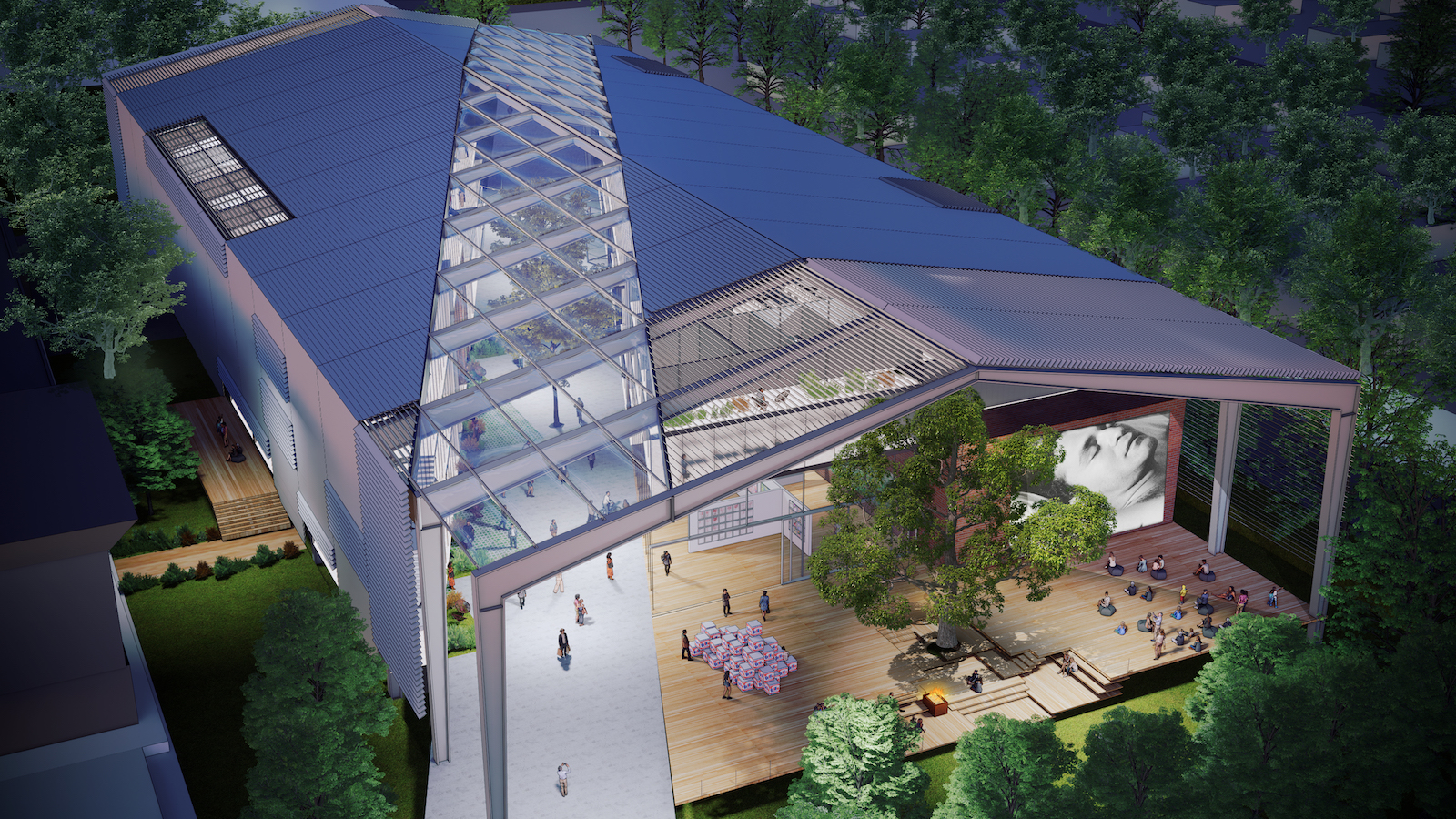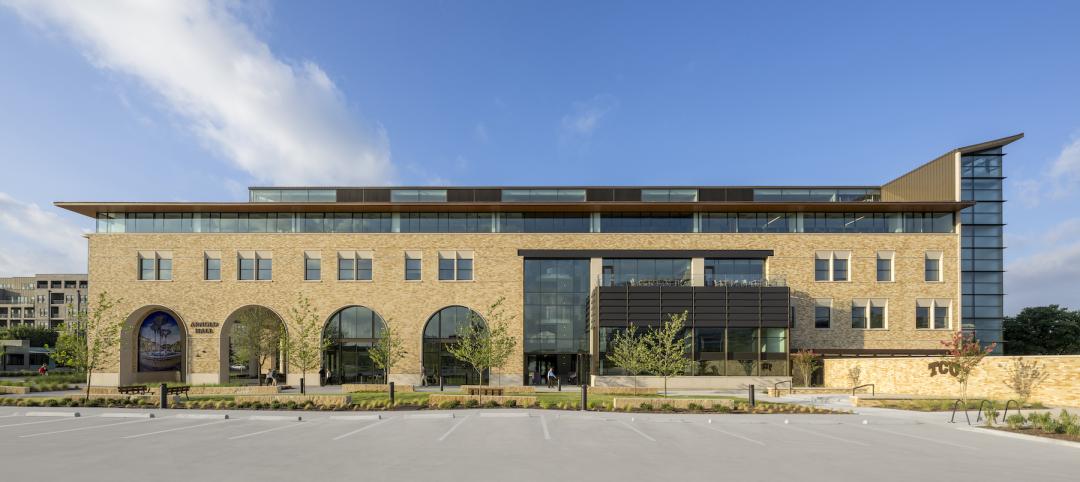A decade or so ago, Voith & Mactavish Architects was doing a lot of performing arts center design for independent secondary and prep schools. “In some ways, higher ed is now catching up” with the expectations of students, explains Daniela Voith, VMA’s Founding Partner and Director of Design, about cultural-related projects her firm has done for universities and colleges lately.
One recent example was the $60 million, 84,000-sf John and Joan Mullen Center for the Performing Arts at Villanova University in Pennsylvania. The LEED Silver-certified building, which was completed in the spring of 2020, is part of a major capital campaign to redevelop the campus’s southern area. The center features two theaters, with 400 and 200 seats respectively, and a 75-seat performance lab. VMA collaborated with Robert A.M. Stern Architects on the art center’s design. Bala Engineering, O’Donnell & Naccarato, and Nave Newell were the project’s engineers, and LF Driscoll provided construction management. The General Building Contractors Association bestowed its 2020 Best Cultural Institution Project Award on this arts center.
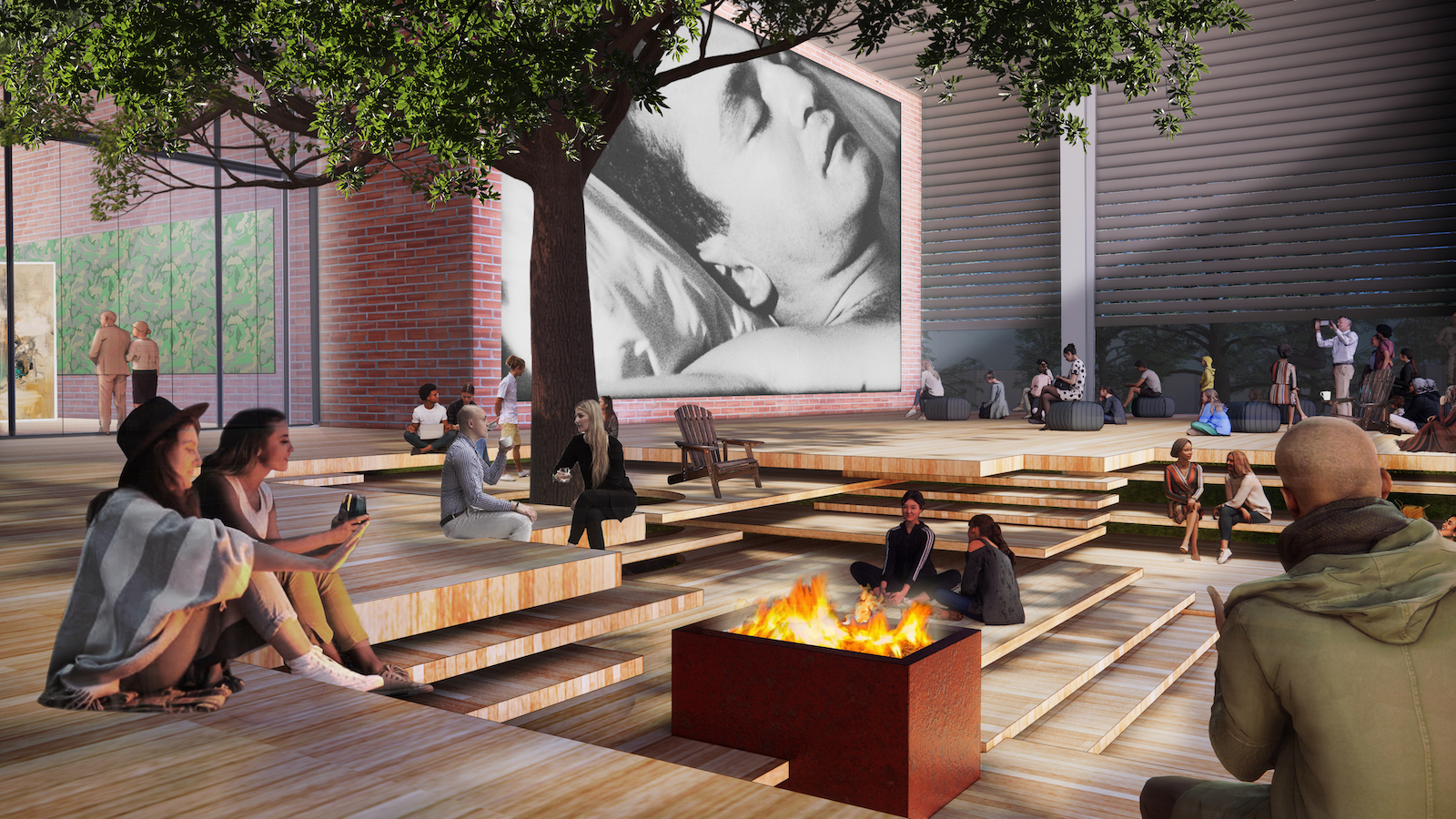
Voith isn’t alone in her belief that there’s a renewed recognition among universities that art and creativity “are part and parcel with what makes America succeed.” She also thinks that new and renovated arts centers can be weapons in the “arms race” being waged by universities and colleges that are raising their facilities and amenities to state-of-the-art levels to lure and retain students and faculty.
It might also be a coincidence, but several high-profile arts-related projects are in various stages of development or completion at a time when college enrollment in the U.S. in 2021 dropped for the second straight year, according to recent data from the National Student Clearinghouse Research Center, which estimates that enrollment was down 6.5 percent from pre-pandemic levels.
Integrating Arts And Education in Higher Education
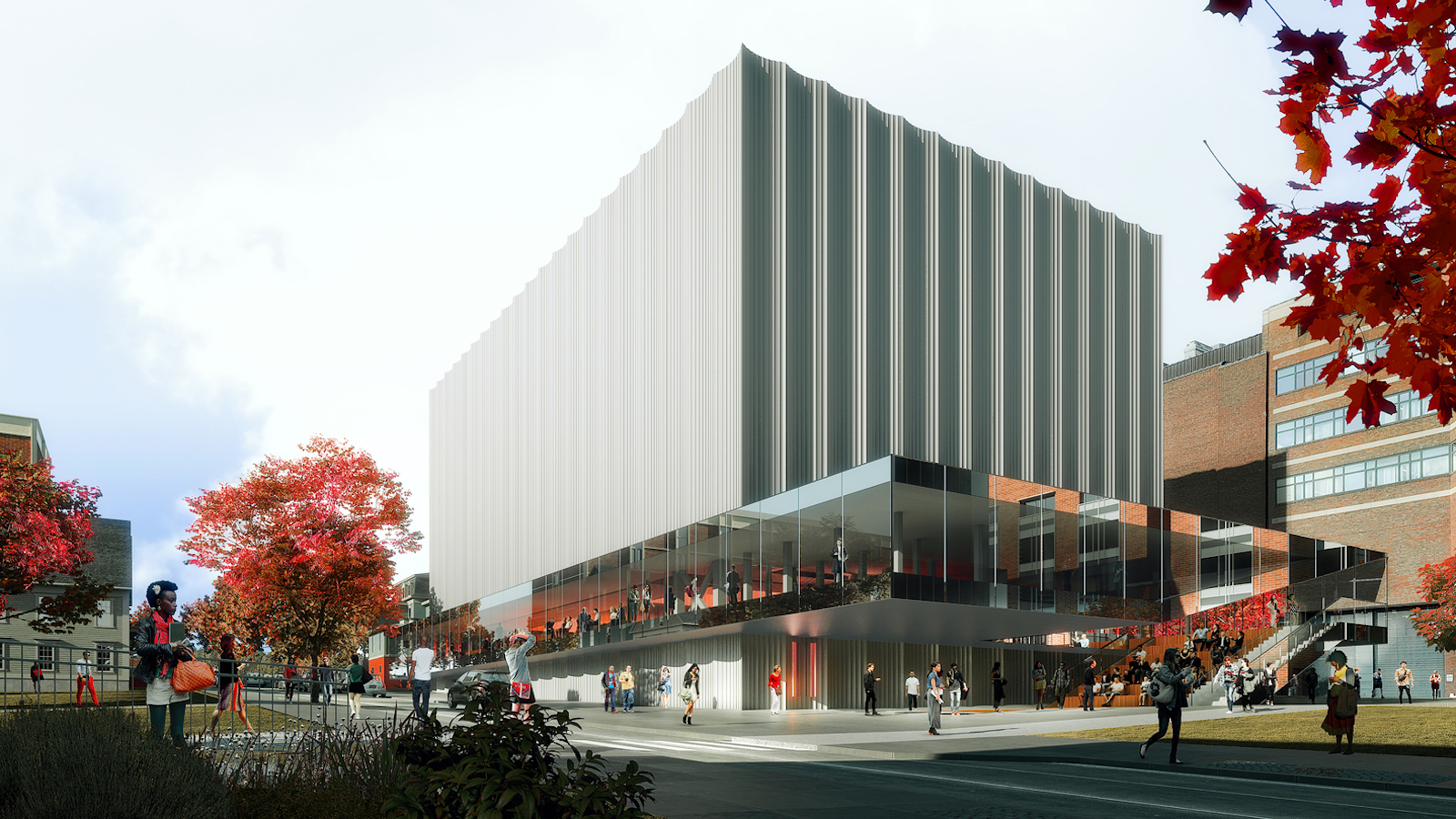
In December, Princeton University in New Jersey—which, in truth, has no trouble attracting student applicants—started construction on its new Art Museum, which at 144,000 sf doubles the size of the museum it is replacing. Designed by Adjaye Associates in collaboration with Cooper Robertson, the three-story Princeton University Art Museum will be a grid of nine pavilions showcasing selections from the museum’s expansive and growing collection, which numbers more than 112,000 items. The building will also house Princeton’s Department of Art and Archeology, and Marquand Library. James Corner Field Operations is the project’s landscape architect, and LF Driscoll provided pre-construction services. The museum is scheduled for completion in 2024. In the interim, the museum will operate two gallery spaces in downtown Princeton, and is planning two outdoor exhibit spaces.
That same month, on December 10, a building team led by the construction management firm Shawmut Design and Construction and the architecture firm REX, celebrated a virtual topping off of Brown University’s 94,000-sf Performing Arts Center, which is scheduled for completion in the spring of 2023, and is utilizing integrated project delivery that incorporates subcontractors and the university into all phases of the project.
The vision for this PAC supports Brown’s 10-year strategic plan, Building on Distinction: A New Plan for Brown (2013), which commits the university to integrative scholarship, educational leadership, academic excellence, and campus development. “Brown is committed to the full integration of the arts into a complete liberal arts education,” the university states on its website. “We know that addressing some of the world’s most vexing challenges benefits from the creative problem-solving enabled by people who have studied and experienced the arts.”
The performing arts center will anchor a future arts district on Brown’s campus in Providence, R.I. Its main performance hall will feature five radically different preset spatial, acoustic, and technical configurations, from a 625-seat symphony orchestra to a 250-seat proscenium theater; as well as three smaller performance and rehearsal spaces below street level where students and faculty can create art works collaboratively. The building’s exterior aluminum rainscreen will appear to shift in color and pattern with time-of-day and seasonal changes.
The performing arts center project is anticipated to achieve a minimum of LEED silver certification. (Brown’s stated policy is not to release cost information until a project is completed.)
Recalling the Past, Without the Obsolescence
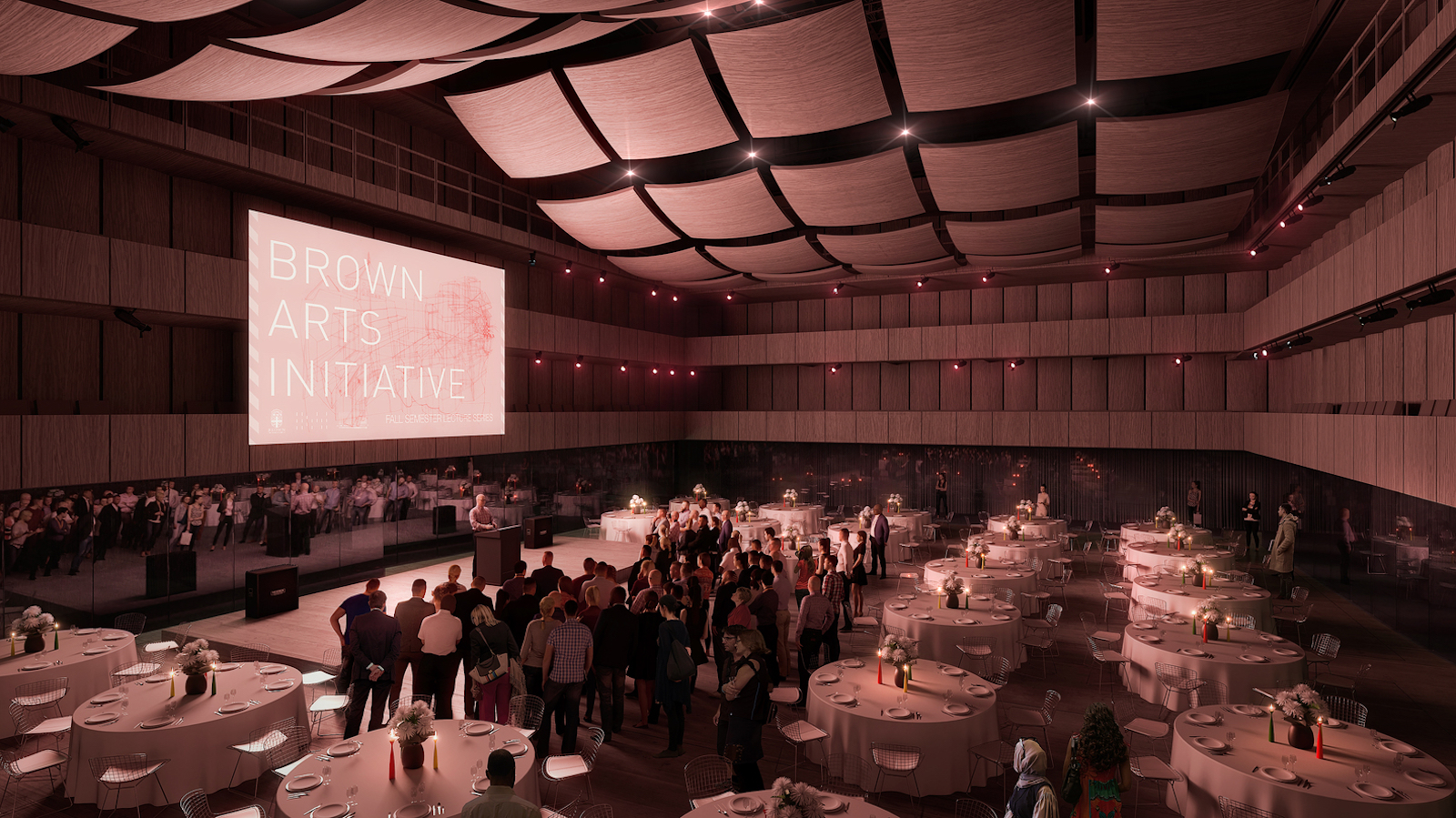
Another arts education project that’s drawn attention is Diller Scofidio + Renfro’s (DS+R) design for the Susan and Fayez Sarofim Hall, a $25 million, 50,000-sf building for visual and dramatic arts students, situated on the Houston campus of Rice University. Sarofim Hall, which is scheduled to break ground this year and be completed in 2024, will add to Rice’s already vibrant cultural district that includes the Moody Center for the Arts (which opened in 2017), the newly constructed Brockman Hall for Opera, and Shepherd School of Music’s Alice Pratt Brown Hall.
Rice’s Visual and Dramatic Arts department is one of the university’s most popular, with 900 students per year.
“Cross-disciplinary discourse is a hallmark of the arts in the 21st century, but it has been difficult at Rice since its facilities are scattered all over campus,” observes Charles Renfro, a Partner at DS+R and a Rice graduate. “Sarofim Hall will not only bring these programs together for the first time, but also facilitate experimentation and collaboration between disciplines through open, transparent, indoor/outdoor and public-facing space.”
DS+R’s design recalls the campus’s now-defunct Art Barn and Rice Media Center, which date back to the late 1960s, and the mass-produced pre-engineered metal structures that were popular after World War II. (Art Barn, which was officially known as the Institute for the Arts, was torn down in 2014, and The Media Center is being razed to make way for Sarofim Hall.)
The prefabricated Sarofim Hall will incorporate exhibition areas, labs, studios, shops, faculty offices, and other collaborative spaces for artists across all media. The building’s design frees the steel frame from its skin, and blurs the boundaries between maker and exhibition spaces.
The studios and facilities are designed to guard against obsolescence by encouraging students to fashion their work areas according to their artistic needs. “The building shell is thought of as a piece of infrastructure: simple, durable, and timeless, while the insides can transform as needs change,” Renfro is quoted as saying.
Sarofim Hall’s distinguishing characteristics include Art Street, a glass-lined walkway that cuts diagonally through the four-story building and will serve as a new entrance to the university; and West Porch, a covered outdoor area for such programming as classes, exhibits, and film screenings.
“DS+R’s initial concept for the new building cleverly weaves the symbolism of that history with the scale, materiality, and ‘porosity ’of the broader campus fabric,” adds University Architect George Ristow. “With the building being at the outward-facing perimeter—and at an entrance into campus that has evolved into one of the most active and dynamic access points—it will undoubtedly have a different kind of visibility beyond the hedges that will be leveraged as a new and unique gateway to the Rice arts corridor.”
The project team for Sarofim Hall includes Jackson & Ryan Architects (executive architect), OJB Landscape Architecture (LA), Fisher Dachs Associates (theater consultant), Threshold (acoustics/AV), Martinez Moore (SE), Walter P Moore (CE), and Wylie Associates (MEP). The university did not identify the project’s construction manager or general contractor.
Related Stories
Libraries | Oct 30, 2024
Reasons to reinvent the Midcentury academic library
DLR Group's Interior Design Leader Gretchen Holy, Assoc. IIDA, shares the idea that a designer's responsibility to embrace a library’s history, respect its past, and create an environment that will serve student populations for the next 100 years.
Healthcare Facilities | Oct 18, 2024
7 design lessons for future-proofing academic medical centers
HOK’s Paul Strohm and Scott Rawlings and Indiana University Health’s Jim Mladucky share strategies for planning and designing academic medical centers that remain impactful for generations to come.
University Buildings | Oct 15, 2024
Recreation and wellness are bedfellows in new campus student centers
Student demands for amenities and services that address their emotional and mental wellbeing are impacting new development on college campuses that has led to recreation centers with wellness portfolios.
Higher Education | Oct 14, 2024
Higher education design for the first-gen college student
In this Design Collaborative blog, Yogen Solanki, Assoc. AIA, shares how architecture and design can help higher education institutions address some of the challenges faced by first-generation students.
University Buildings | Oct 9, 2024
Des Moines University Medicine and Health Sciences opens a new 88-acre campus
Des Moines University Medicine and Health Sciences has opened a new campus spanning 88 acres, over three times larger than its previous location. Designed by RDG Planning & Design and built by Turner Construction, the $260 million campus features technology-rich, flexible educational spaces that promote innovative teaching methods, expand research activity, and enhance clinical services. The campus includes four buildings connected with elevated pathways and totaling 382,000 sf.
University Buildings | Oct 4, 2024
Renovations are raising higher education campuses to modern standards
AEC higher ed Giants report working on a variety of building types, from performing arts centers and libraries to business schools. Hybrid learning is seemingly here to stay. And where possible, these projects address wellness and mental health concerns.
Museums | Oct 1, 2024
UT Dallas opens Morphosis-designed Crow Museum of Asian Art
In Richardson, Tex., the University of Texas at Dallas has opened a second location for the Crow Museum of Asian Art—the first of multiple buildings that will be part of a 12-acre cultural district. When completed, the arts and performance complex, called the Edith and Peter O’Donnell Jr. Athenaeum, will include two museums, a performance hall and music building, a grand plaza, and a dedicated parking structure on the Richardson campus.
Higher Education | Sep 30, 2024
Studio Gang turns tobacco warehouse into the new home of the University of Kentucky’s College of Design
Studio Gang has completed the Gray Design Building, the new home of the University of Kentucky’s College of Design. In partnership with K. Norman Berry Associates Architects, Studio Gang has turned a former tobacco warehouse into a contemporary facility for interdisciplinary learning and collaboration.
University Buildings | Sep 24, 2024
Texas Christian University opens new medical school building
The facility is designed and programmed to anticipate advances in medicine and technology.
Designers | Sep 20, 2024
The growing moral responsibility of designing for shade
Elliot Glassman, AIA, NCARB, LEED AP BD+C, CPHD, Building Performance Leader, CannonDesign, makes the argument for architects to consider better shade solutions through these four strategies.


